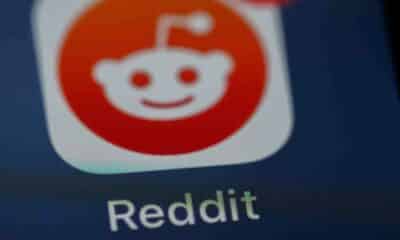News
Substack Chat is a Twitter alternative for newsletter people
Substack Chat is a real-time messaging platform that allows creators and fans to network in a private space.

Just a heads up, if you buy something through our links, we may get a small share of the sale. It’s one of the ways we keep the lights on here. Click here for more.
Popular newsletter platform Substack today launched Substack Chat.
Substack Chat is a real-time messaging platform that allows creators and fans to network in a private space, without the need to download a separate application or register for a third-party service.
The feature works a bit like a traditional web forum, albeit with a few key differences.
Creators can start conversations with their subscribers and followers, who can then respond. To keep things organized, comments also allow for nested replies (or ‘threads’).
Substack has positioned Substack Chat as an alternative to existing social networks, like Twitter, or community-centric platforms, like Discord, Reddit, or Slack.
As you’d expect, given the name, comments appear beneath a post in real-time, allowing for the kinds of free-flowing conversations you’d expect from existing messaging and social media services.
Timing is everything
The recent acquisition of Twitter by Elon Musk has generated ripples of discontent among its userbase. Many fear the site may lose its character in the face of new monetization efforts.
Substack Chat arrives at an opportune time and has the potential to capitalize on Twitter’s growing user unhappiness.
The circumstances of its arrival seem deliberate, given the recent anti-Twitter musings that have emerged from Substack in recent weeks.
On Monday, the company published a guide for creators on migrating their Twitter followers to Substack.
The piece opens with the line: “Twitter is changing, and it’s tough to predict what might be next.” Subtle.
Another post from Substack co-founder Hamish McKenzie has the title: “The problem isn’t that Elon Musk owns Twitter – it’s that you don’t.”
The new global town square
Substack clearly hopes that the mistrust of the new Twitter will encourage users to look elsewhere.
And while the majority of Twitter users are unlikely to take the company up on its offer, it may resonate with Substack’s core demographic of writers, journalists, academics, and podcasters.
Ultimately, this may prove more damaging to Twitter than any other would-be Twitter alternatives could imagine. The vast majority of Twitter users are lurkers — people whose activity mostly involves reading content produced by a handful of high-profile users.
If Twitter suffers an exodus of its biggest attractions, the company will undoubtedly struggle to recover.
We often hear Twitter described as a “global town square.” But here’s the thing about town squares: there’s usually only one of them.
Have any thoughts on this? Carry the discussion over to our Twitter or Facebook.
Editors’ Recommendations:
- Twitter is reportedly working on a Vine reboot
- Google Lens is now directly in Search: here’s how to use it
- Substack’s new RSS feed reader is now on web and mobile
- Microsoft Office is rebranding to Microsoft 365































